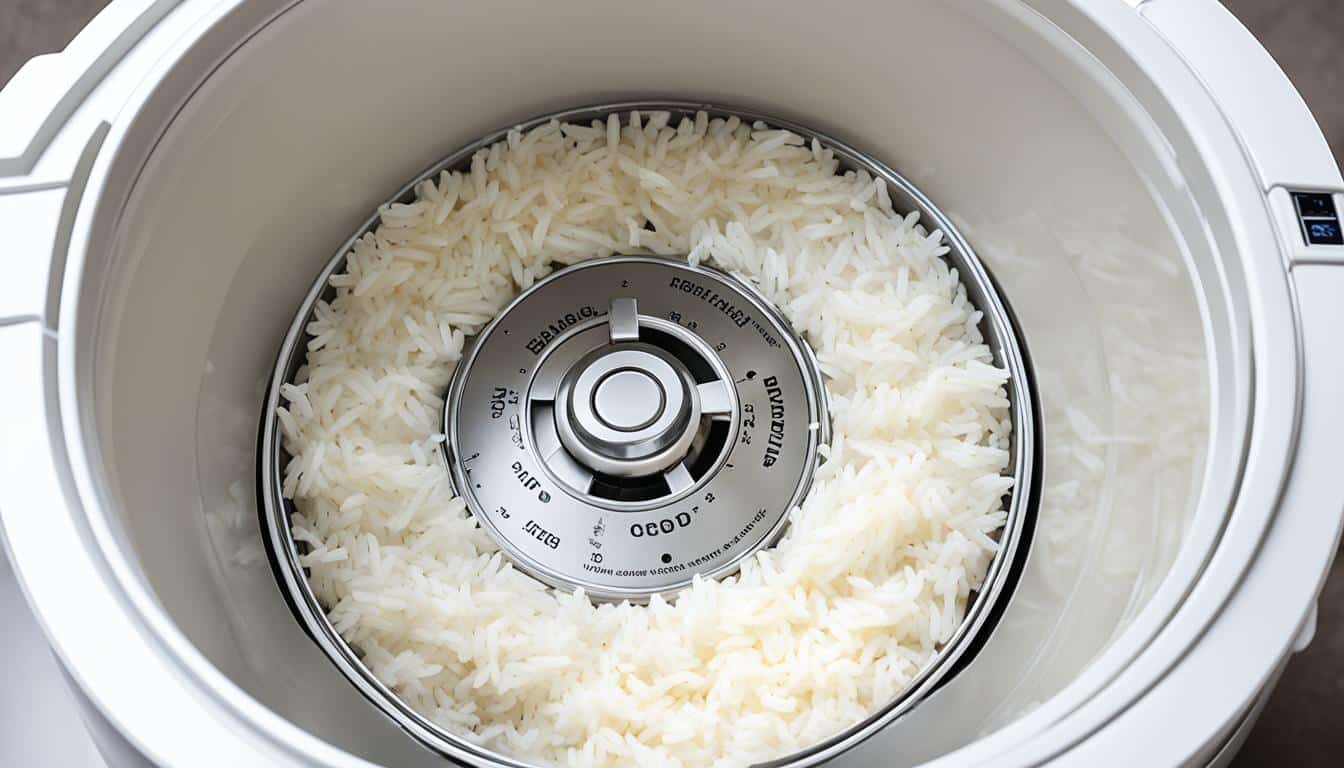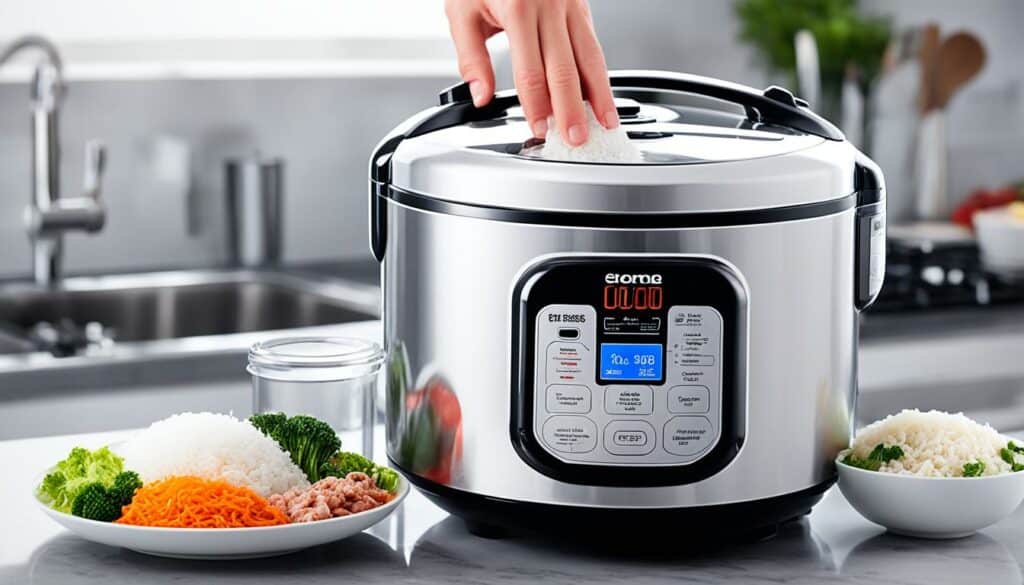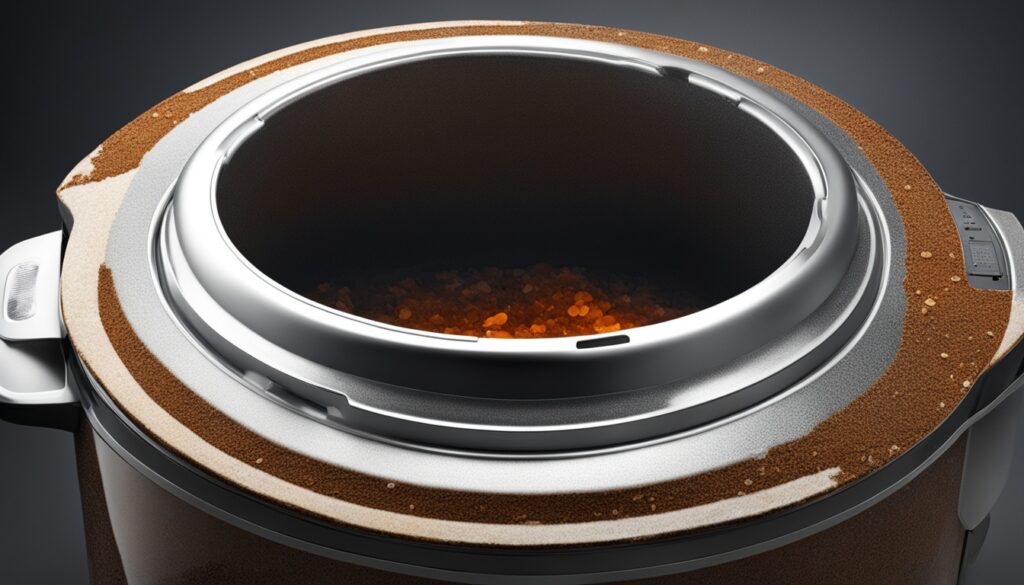
Owning a reliable rice cooker can be a game-changer in the kitchen, allowing you to effortlessly prepare perfectly cooked rice every time. However, to ensure your trusty appliance continues to perform at its best, it’s essential to properly care for and maintain it. This article will provide comprehensive tips and best practices for taking care of your rice cooker, from proper cleaning and maintenance routines to troubleshooting common issues and energy-efficient cooking techniques.
Whether you’re a seasoned home chef or a new rice cooker owner, these guidelines will help you get the most out of your kitchen appliance and prolong its lifespan. By following these steps, you’ll be able to keep your rice cooker in top shape, delivering consistent, flawless results for years to come.
Key Takeaways
- Understand the different types of rice cookers and their components to determine the best maintenance practices for your model.
- Master proper usage and cooking techniques, such as measuring the correct rice-to-water ratio and avoiding common mistakes, to extend the life of your appliance.
- Establish a regular cleaning and maintenance routine to prevent the buildup of residue, odors, and potential malfunctions.
- Adopt proper storage and handling techniques to ensure your rice cooker remains in pristine condition.
- Replace worn-out parts, such as the inner pot or gasket, to maintain optimal performance and prevent more significant issues.
Understanding Your Rice Cooker
To properly care for your rice cooker, it’s essential to understand the different types of rice cookers available and their basic components and functions. Rice cookers can vary significantly in terms of capacity, cooking mechanisms, and additional features. Familiarizing yourself with the specific model you own will help you identify the best maintenance and usage practices to ensure it continues to serve you well for years to come.
Different Types of Rice Cookers
The rice cooker market offers a wide range of options, from basic models to advanced, multi-functional appliances. Some of the most common types of rice cookers include basic electric rice cookers, induction heating rice cookers, and those with specialized features like fuzzy logic technology or micom (microcomputer) controls. Understanding the unique characteristics and capabilities of each type can help you choose the rice cooker that best suits your cooking needs and preferences.
Basic Components and Functions
Regardless of the specific model, most rice cookers share a common set of basic components and functions. These typically include an inner pot, a heating plate or element, a control panel with various cooking settings, and a steam vent or valve. By familiarizing yourself with these key parts and their roles, you’ll be better equipped to maintain your rice cooker effectively and avoid common issues that may arise.
| Rice Cooker Component | Function |
|---|---|
| Inner Pot | The removable inner container where the rice is cooked. |
| Heating Plate | The element responsible for generating heat to cook the rice. |
| Control Panel | Allows you to select cooking settings, such as white rice, brown rice, or steam. |
| Steam Vent/Valve | Releases excess steam during the cooking process to prevent boiling over. |
By understanding the different types of rice cookers and the key components that make them function, you’ll be well on your way to providing proper care and maintenance for your appliance, ensuring it continues to deliver delicious, perfectly cooked rice for years to come.
Proper Usage and Cooking Techniques
Mastering the proper usage and cooking techniques for your rice cooker is essential for getting the best results and extending its lifespan. In this section, we’ll delve into the importance of measuring the correct rice to water ratio, provide guidance on cooking different types of rice, and highlight common mistakes to avoid when using your rice cooker.
Measuring Rice and Water Ratio
The rice-to-water ratio is a critical factor in achieving perfectly cooked rice. As a general guideline, a 1:1 ratio of rice to water works well for most white rice varieties. However, the specific ratio may vary depending on the type of rice you’re cooking. For example, brown rice may require a slightly higher water-to-rice ratio, while short-grain or sushi rice may need a lower ratio. Refer to your rice cooker’s instruction manual or consult online resources to determine the optimal rice to water ratio for your particular needs.
Cooking Different Types of Rice
Rice cookers are versatile appliances that can handle a variety of rice types, from white and brown to specialty grains like basmati, jasmine, and wild rice. Each type of rice has its own unique cooking requirements, so it’s essential to adjust the cooking settings accordingly. For instance, white rice typically cooks faster than brown rice, and some rice cookers even have dedicated settings for different varieties. Familiarize yourself with the cooking different rice types in your rice cooker to ensure consistent, delicious results.
Avoiding Common Mistakes
To extend the life of your rice cooker and maintain optimal performance, it’s crucial to avoid common mistakes. Some of the most frequent issues include overfilling the inner pot, using the wrong cooking settings, and failing to clean the appliance regularly. Overloading the inner pot can strain the heating element and lead to uneven cooking, while using incorrect settings can result in undercooked or mushy rice. By being mindful of these rice cooker common mistakes, you can ensure your appliance continues to serve you well for years to come.

Maintaining Your Rice Cooker
Keeping your rice cooker clean and well-maintained is crucial for prolonging its lifespan and ensuring optimal performance. This section will provide step-by-step instructions for regularly cleaning the inner pot, outer housing, and other removable parts, as well as guidelines for descaling and removing mineral buildup that can accumulate over time. Proper maintenance routines, such as wiping down the appliance after each use and deep-cleaning on a periodic basis, will help prevent the buildup of residue, odors, and potential malfunctions.
Regular Cleaning and Maintenance
To keep your rice cooker in tip-top shape, it’s important to establish a regular cleaning routine. Start by unplugging the appliance and allowing it to cool completely. Then, remove the inner pot and other detachable parts, such as the steam vent and condensation collector. Wash these components with warm, soapy water, using a soft cloth or sponge to gently scrub away any stuck-on food or residue. Rinse thoroughly and dry completely before reassembling the rice cooker.
For the outer housing, wipe down the surface with a damp cloth or mild cleaning solution, being careful not to get any moisture inside the appliance. Pay special attention to the heating plate and any crevices where food or water can accumulate. Regular maintenance like this will help prevent the buildup of rice cooker odors and ensure your appliance remains in optimal working condition.
Descaling and Removing Mineral Buildup
Over time, minerals from the water used in your rice cooker can create a buildup on the heating plate and other internal components. This can reduce the efficiency of your appliance and even lead to malfunctions. To address this issue, it’s important to periodically descale your rice cooker.
Begin by unplugging the appliance and allowing it to cool completely. Then, fill the inner pot with a mixture of equal parts white vinegar and water. Bring the solution to a boil by running the rice cooker through a full cooking cycle. Once it’s done, let the appliance sit for 30 minutes to an hour, allowing the vinegar solution to work on the mineral buildup. Finally, rinse the inner pot thoroughly and dry it completely before reassembling the rice cooker.

Regularly following this descaling process will help maintain the overall performance and longevity of your rice cooker. By keeping it clean and free of mineral buildup, you can ensure your appliance continues to provide you with perfectly cooked rice for years to come.
Extending the Life of Your Rice Cooker
In addition to regular cleaning and maintenance, there are several other practices you can adopt to extend the life of your rice cooker. Proper storage and handling techniques, as well as replacing worn-out parts, can go a long way in ensuring your trusty appliance continues to serve you well for years to come.
Proper Storage and Handling
When not in use, it’s important to store your rice cooker in a clean, dry place. Avoid leaving it on the countertop, where it may be exposed to dust, moisture, or other environmental factors that could compromise its performance. Instead, consider keeping it in a cabinet or pantry, where it will be protected from potential damage. Additionally, be mindful when moving or transporting your rice cooker, as rough handling can lead to cracks, dents, or other issues that could shorten its lifespan.
Replacing Worn-Out Parts
Over time, certain components of your rice cooker, such as the inner pot or the gasket, may become worn or damaged. Regularly inspecting these parts and replacing them as needed can help maintain optimal performance and prevent more significant problems from arising. Refer to the manufacturer’s recommendations or consult a professional to determine the appropriate replacement parts and ensure a proper fit for your specific model.
By following these guidelines for proper storage, handling, and part replacement, you can extend the life of your rice cooker and continue to enjoy perfectly cooked rice for many years to come.
